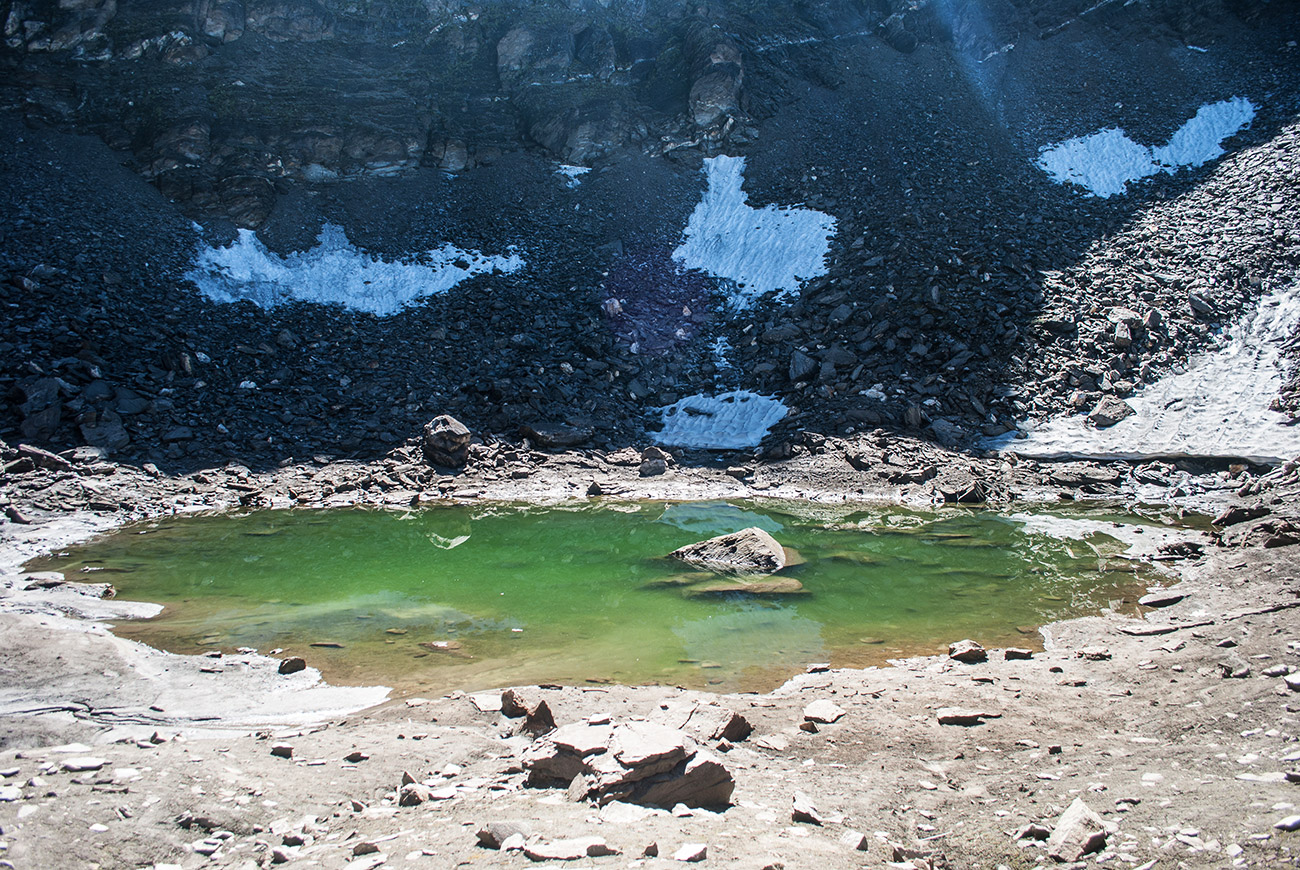© 2018 All Rights Reserved. Do not distribute or repurpose this work without written permission from the copyright holder(s).
Printed from https://www.damninteresting.com/curio/the-mystery-lake-of-the-himalayas/

Nestled in a valley high in the Himalayas in northern India is a small lake named Roopkund, known locally as Mystery Lake. The area around Roopkund Lake is uninhabited; at an altitude of over five kilometers, the lake is frozen for all but one month out of the year, and ice storms occasionally pose a significant threat. The mystery concerns the origin of the occupants of the lake: not fish or other common lake-dwellers, but hundreds of human skeletons.
Roopkund Lake, also known as Skeleton Lake, and its surroundings are littered with around 200 sets of human remains. The state of the skeletons indicates that they have been lying in and around the lake for many centuries, but their exact age and the cause of the mass death was unknown until 2004, when National Geographic sent a team of researchers to retrieve some of the skeletons for study.
The National Geographic team discovered that the skeletons dated from 850 C.E. Most of the previous owners of the bones originated in Iran, although a few were from the local Indian population. Fractures in the skulls hint at the cause of death: devastating blows to the top of the heads, from rounded objects roughly the size and shape of a cricket ball (or slightly larger than a baseball). There are no signs of injury to any other part of the bodies. The research team finally concluded that a band of travelers from Iran, traversing the mountains with locally-hired porters, was caught in a terrible hailstorm. Unable to seek shelter, they succumbed to the blunt trauma and their bodies tumbled down the steep slopes, eventually collecting in the lake.
© 2018 All Rights Reserved. Do not distribute or repurpose this work without written permission from the copyright holder(s).
Printed from https://www.damninteresting.com/curio/the-mystery-lake-of-the-himalayas/
Since you enjoyed our work enough to print it out, and read it clear to the end, would you consider donating a few dollars at https://www.damninteresting.com/donate ?
How could I have missed this entry? Thanks for making it available.
Moreover, this is an item of which I was completely unaware.
This should be updated. A NY Times article from August 20, 2019, notes that more recent evidence suggests the bones were deposited at various times including as late as the 17th and 18th centuries. Love damn interesting and find this topic damn interesting.